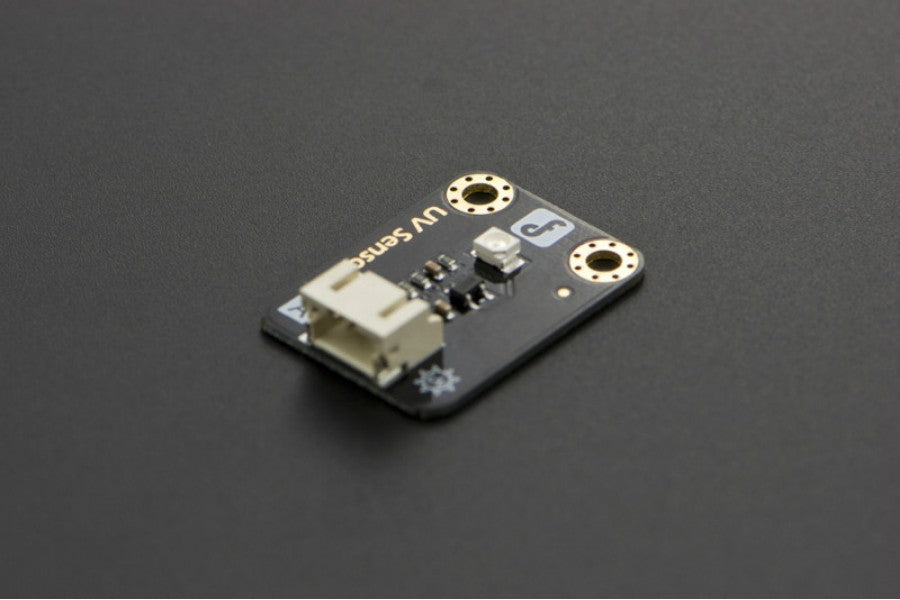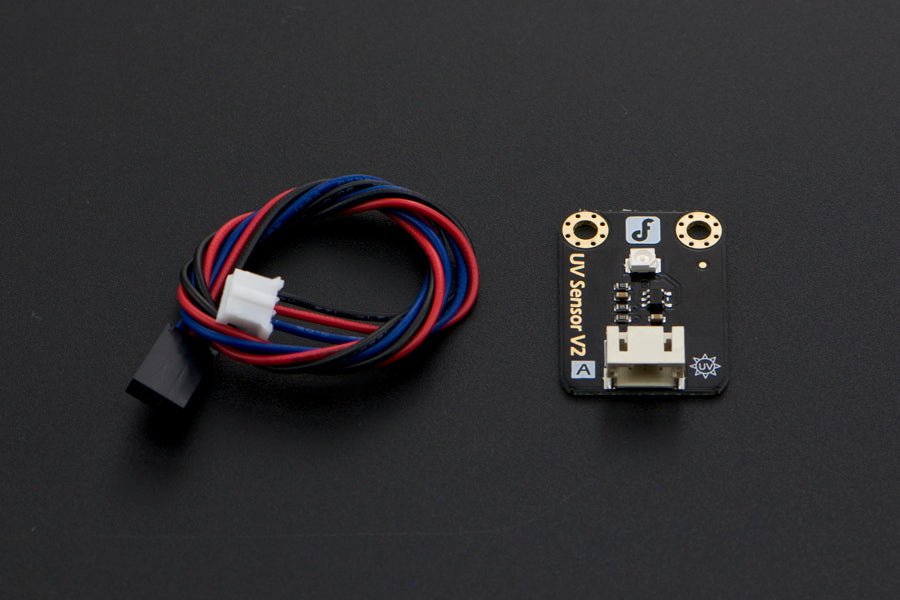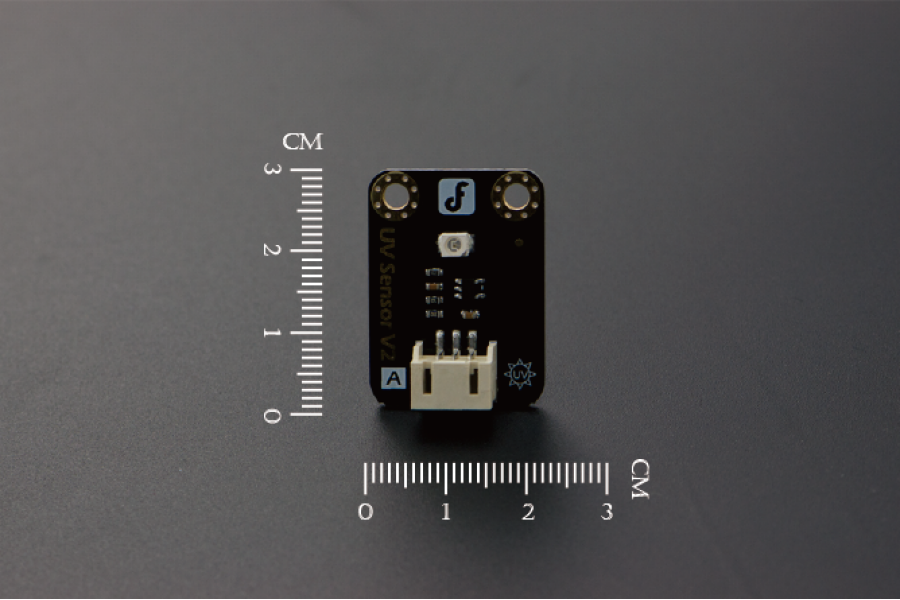UV Sensor Gravity
UV Sensor Gravity - This UV Sensor with GUVA-S12SD chip is suitable for detecting the UV radiation in sunlight. It can be used in UV Index Monitoring, DIY project, UV-A Lamp Monitoring, Plants growing Environmental monitoring...etc.
It can detect the UV wavelength of 200-370nm, fast response, linear analog voltage signal output. Small size, easy for installing. With the diagram of the world health organization UV index grading standards, you can know the UV index from the sensor directly.
Frequently asked Questions about UV Sensor Gravity
Q1: How does the UV Sensor Gravity work?
An analogue output pin, amplifier circuitry, and a UV photodiode make up the UV Sensor Gravity module. In order to detect UV light and turn it into an electrical current, the UV photodiode was particularly created. This current is amplified by the amplifier circuitry to produce a quantifiable analogue output voltage.
The UV photodiode produces a current proportional to the UV light's intensity when exposed to UV radiation. The voltage created from this current is then read by an Arduino board or microcontroller via the analogue output pin. The intensity of UV radiation in the surroundings may be calculated by calibrating the sensor and comparing the output voltage with established UV radiation values.
Q2: What is the operating range of the UV Sensor Gravity?
The UV Sensor Gravity's functioning range varies depending on the model or version. The two most prevalent UV light wavelengths that reach the Earth's surface are UVB (280-315 nm) and UVA (315-400 nm), and this device can typically detect both of these wavelengths. Since the majority of UVC light (100-280 nm) is absorbed by the Earth's atmosphere, the module could not be sensitive to it.
Q3: How is the output of the UV Sensor Gravity calibrated?
Depending on the model, the UV Sensor Gravity may be pre-calibrated or require manual calibration. Modules that have been pre-calibrated are often calibrated at the factory to deliver precise readings right out of the box. If manual calibration is necessary, it typically entails placing the sensor in contact with recognised UV light sources and measuring the resulting output voltage. Using this information, a calibration curve or equation is then developed to link the output voltage to the intensity of UV light.
Q4: What are the typical applications of the UV Sensor Gravity?
There are several uses for the UV Sensor Gravity, including but not limited to:
- UV index monitoring: Measuring the UV radiation's intensity to calculate the UV index for use in weather predictions or self-monitoring UV exposure.
- UV sterilisation systems: Keeping track of the UV radiation levels in equipment like UV sterilisation chambers or cabinets.
- UV intensity monitoring in industrial processes such as UV printing, UV curing, or UV coating.
- Wearable technology: UV sensors are being incorporated into accessories or wearable technology to offer data on UV exposure for personal health and safety.
- Monitoring the environment: Measuring UV radiation levels in open spaces to examine the effects on ecosystems or agriculture.
APPLICATIONS
- UV-A Lamp Monitoring
- UV Index Monitoring
- DIY UV electronic project,etc
DOCUMENTS
-
Wiki Doc
-
Schematic
-
GUVA-S12SD datasheet
-
Guide for UV sensor Appliction
-
SGM8521 datasheet
UV Sensor Gravity
UV Sensor Gravity
Out of stock
Product Code
SKU:SEN0162
Regular price
₱ 317.00
Regular price
Sale price
₱ 317.00
Unit price
per
Couldn't load pickup availability








